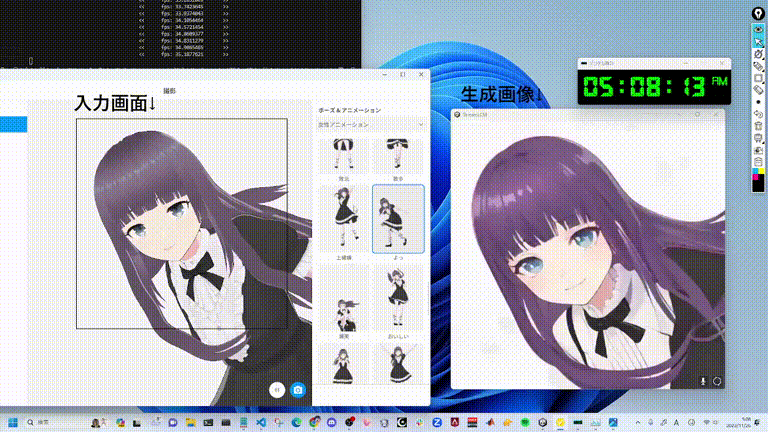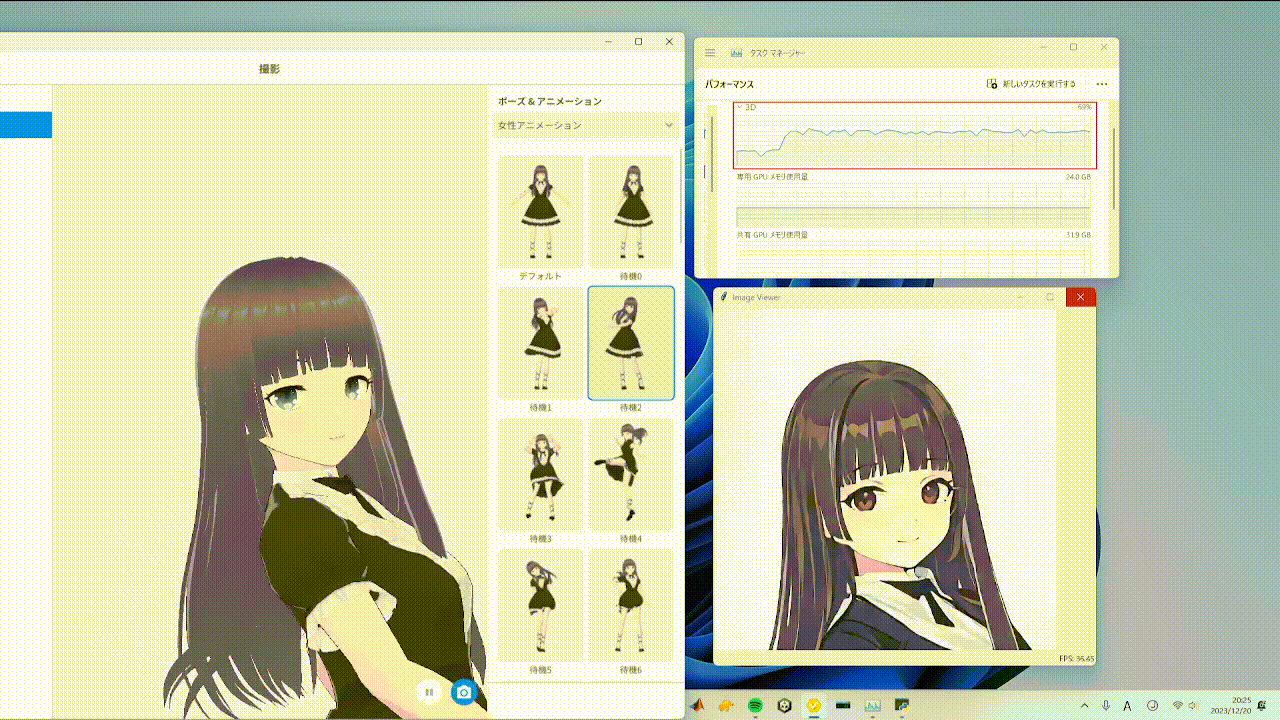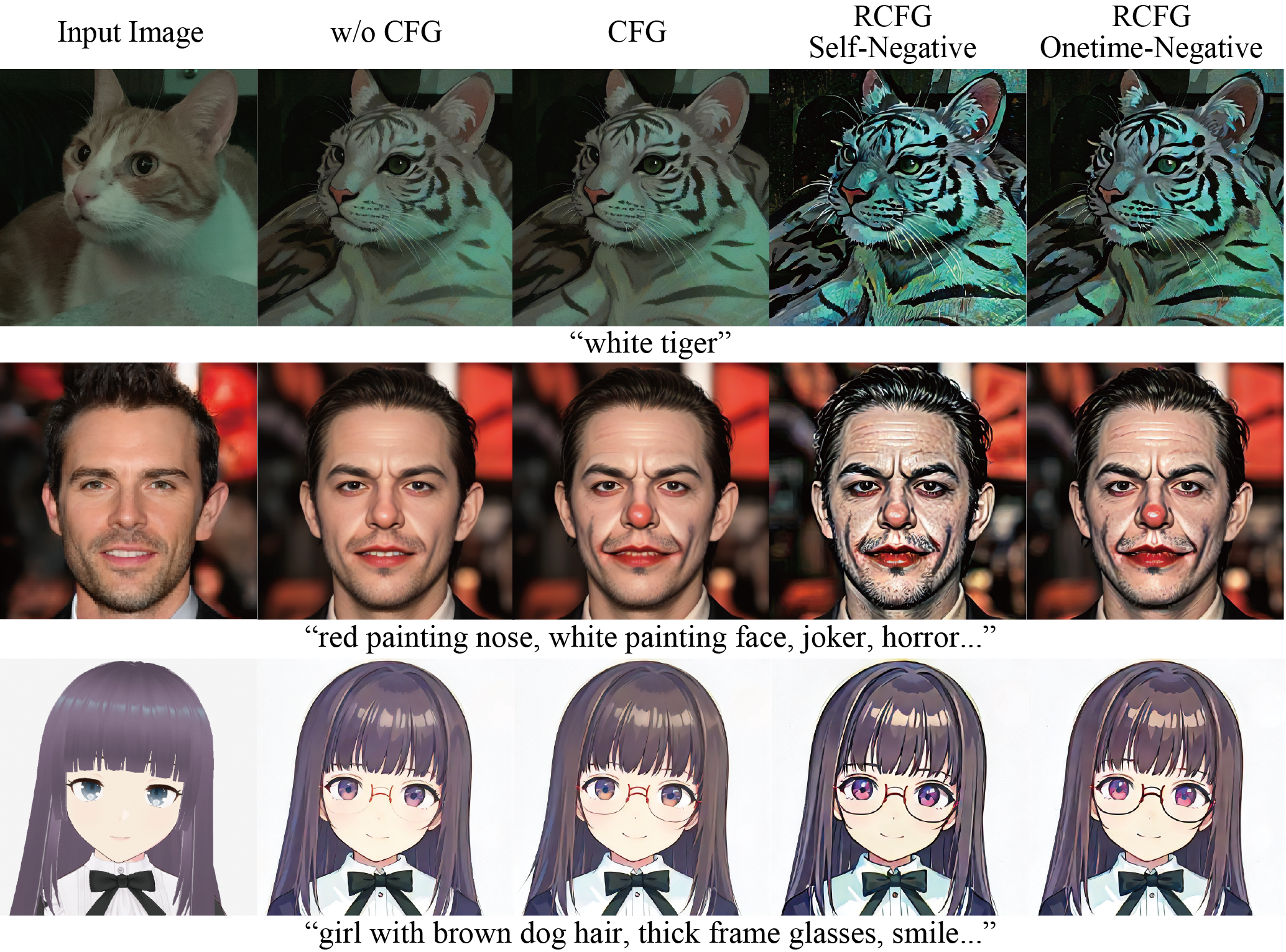Authors: Akio Kodaira, Chenfeng Xu, Toshiki Hazama, Takanori Yoshimoto, Kohei Ohno, Shogo Mitsuhori, Soichi Sugano, Hanying Cho, Zhijian Liu, Kurt Keutzer
StreamDiffusionは、リアルタイム画像生成を実現するために最適化されたパイプラインです。従来の画像生成パイプラインと比べて飛躍的な速度向上を実現しました。
StreamDiffusionの開発にあたり、丁寧なサポート、有意義なフィードバックと議論をしていただいた Taku Fujimoto 様と Radamés Ajna 様、そして Hugging Face チームに心より感謝いたします。
-
Stream Batch
- バッチ処理によるデータ処理の効率化
-
Residual Classifier-Free Guidance - 詳細
- 計算の冗長性を最小限に抑えるCFG
-
Stochastic Similarity Filter - 詳細
- 類似度によるフィルタリングでGPUの使用効率を最大化
-
IO Queues
- 入出力操作を効率的に管理し、よりスムーズな実行を実現
-
Pre-Computation for KV-Caches
- 高速処理のためのキャッシュ戦略を最適化します。
-
Model Acceleration Tools
- モデルの最適化とパフォーマンス向上のための様々なツールの利用
GPU: RTX 4090, CPU: Core i9-13900K, OS: Ubuntu 22.04.3 LTS 環境で StreamDiffusion pipeline を用いて 画像を生成した場合、以下のような結果が得られました。
| model | Denoising Step | fps on Txt2Img | fps on Img2Img |
|---|---|---|---|
| SD-turbo | 1 | 106.16 | 93.897 |
| LCM-LoRA + KohakuV2 |
4 | 38.023 | 37.133 |
Feel free to explore each feature by following the provided links to learn more about StreamDiffusion's capabilities. If you find it helpful, please consider citing our work:
@article{kodaira2023streamdiffusion,
title={StreamDiffusion: A Pipeline-level Solution for Real-time Interactive Generation},
author={Akio Kodaira and Chenfeng Xu and Toshiki Hazama and Takanori Yoshimoto and Kohei Ohno and Shogo Mitsuhori and Soichi Sugano and Hanying Cho and Zhijian Liu and Kurt Keutzer},
year={2023},
eprint={2312.12491},
archivePrefix={arXiv},
primaryClass={cs.CV}
}anaconda、pip、または後述するDockerで仮想環境を作成します。
anacondaを用いる場合
conda create -n streamdiffusion python=3.10
conda activate streamdiffusionpipを用いる場合
python -m venv .venv
# Windows
.\.venv\Scripts\activate
# Linux
source .venv/bin/activate使用するGPUのCUDAバージョンに合わせてPyTorchをインストールしてください。
CUDA 11.8
pip3 install torch==2.1.0 torchvision==0.16.0 xformers --index-url https://download.pytorch.org/whl/cu118CUDA 12.1
pip3 install torch==2.1.0 torchvision==0.16.0 xformers --index-url https://download.pytorch.org/whl/cu121詳しくはこちら
StreamDiffusionをインストール
pip install git+https://github.com/cumulo-autumn/StreamDiffusion.git@main#egg=streamdiffusionTensorRTをインストール
python -m streamdiffusion.tools.install-tensorrtgit clone https://github.com/cumulo-autumn/StreamDiffusion.git
python setup.py develop easy_install streamdiffusion[tensorrt]
python -m streamdiffusion.tools.install-tensorrtgit clone https://github.com/cumulo-autumn/StreamDiffusion.git
cd StreamDiffusion
docker build -t stream-diffusion:latest -f Dockerfile .
docker run --gpus all -it -v $(pwd):/home/ubuntu/streamdiffusion stream-diffusion:latestexamples からサンプルを実行できます。
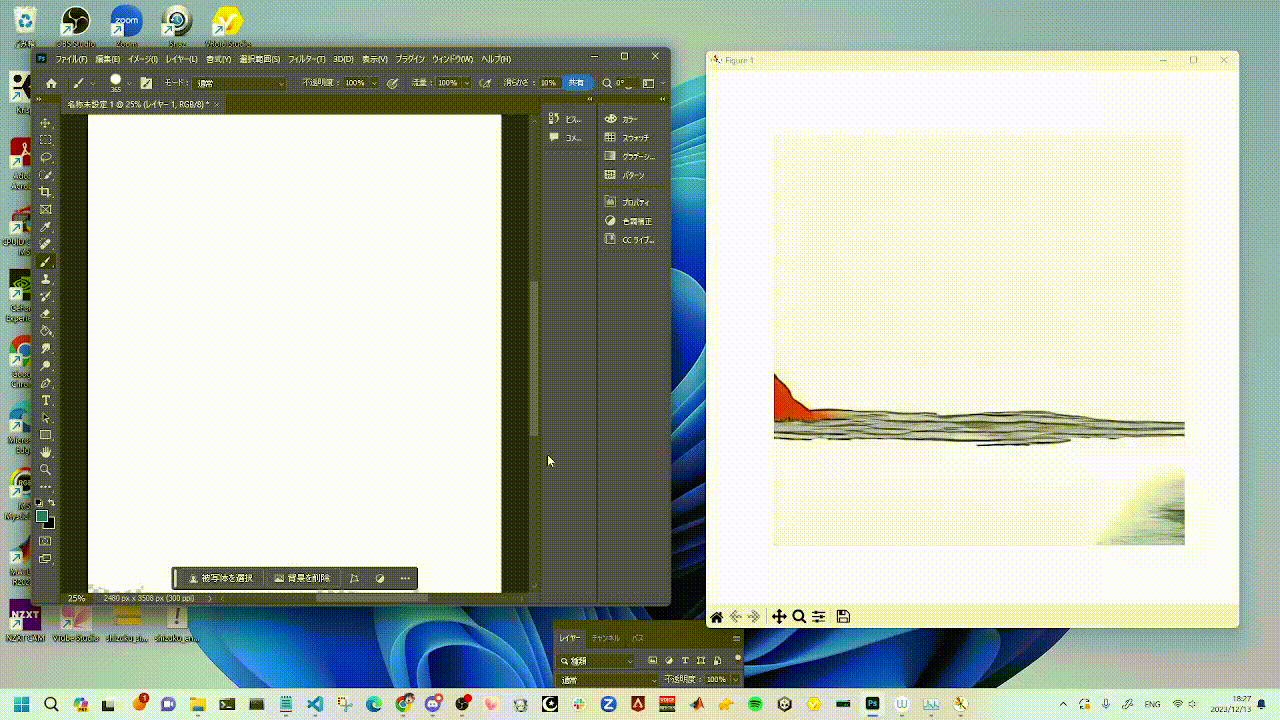 |
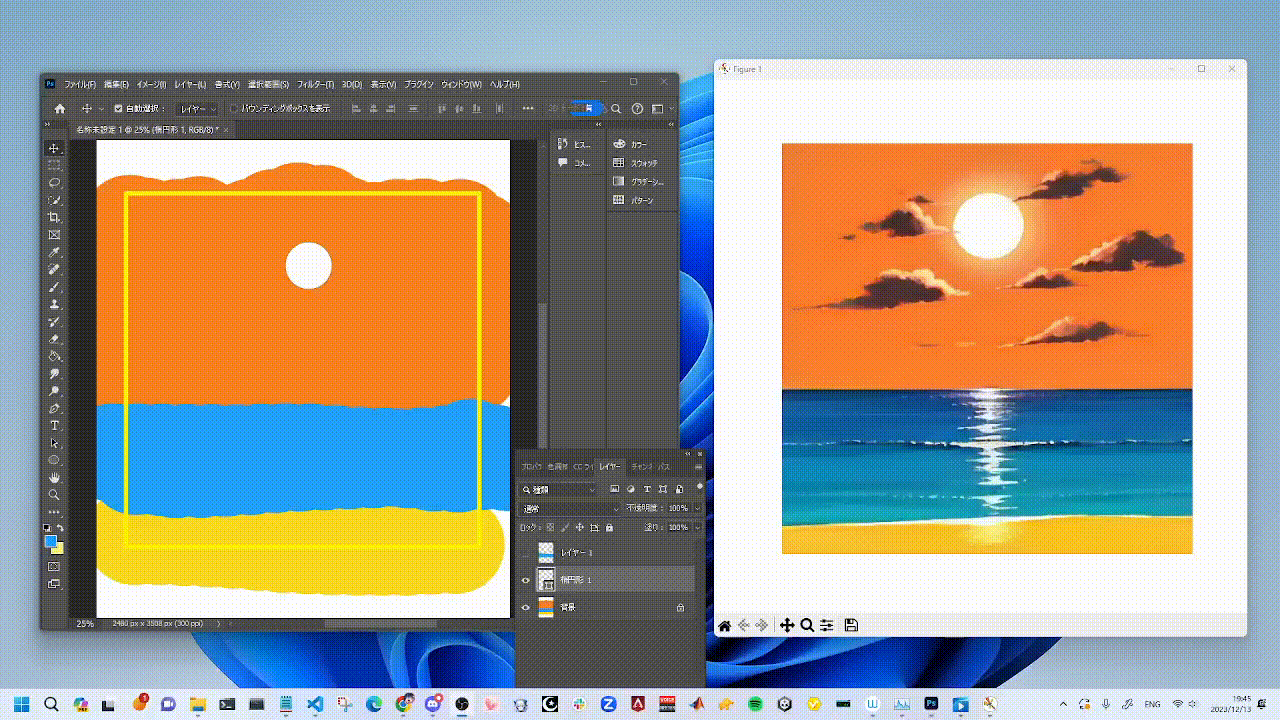 |
|---|---|
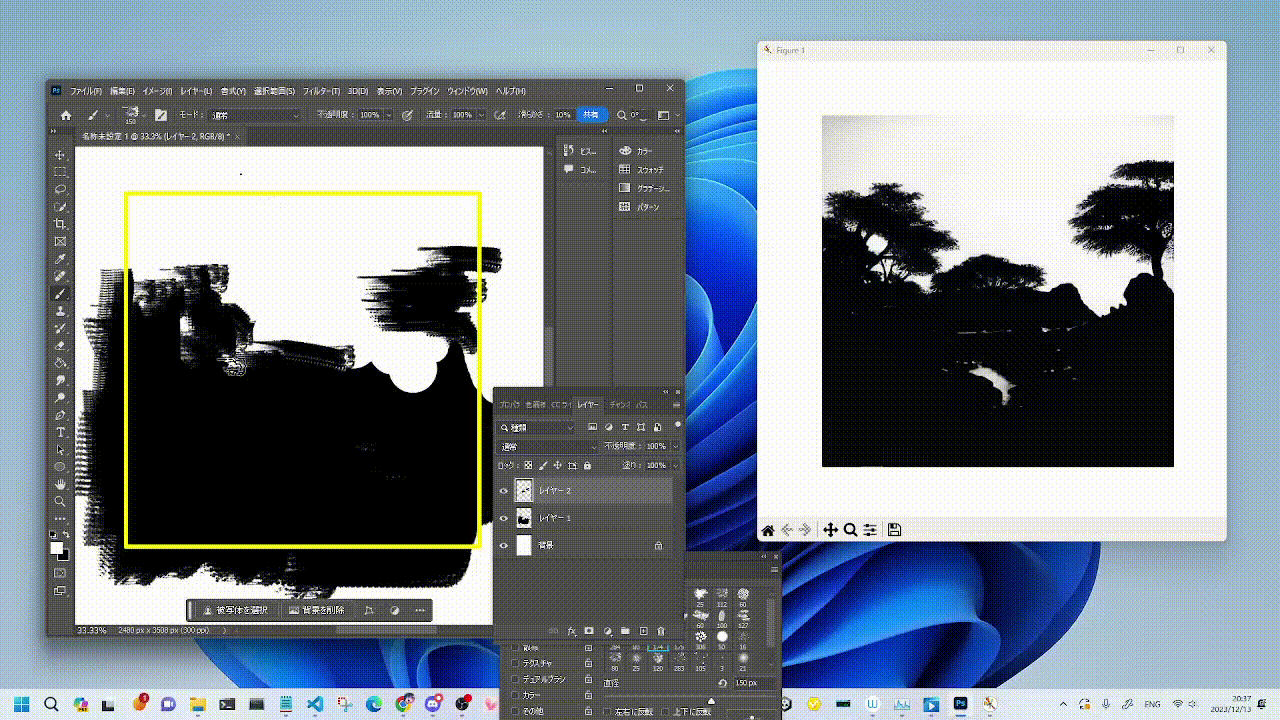 |
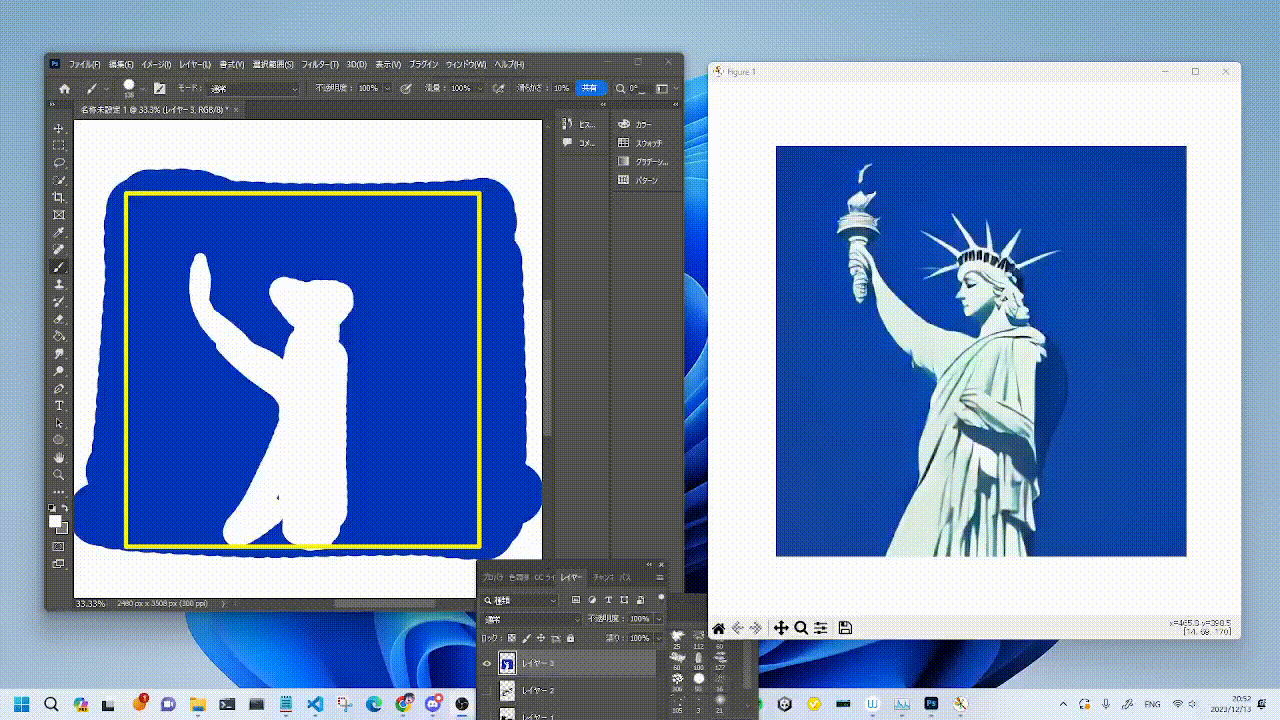 |
具体的な詳細設定及びユーザカスタマイズは以下をお読みください。
リアルタイムのtxt2imgデモは demo/realtime-txt2imgにあります。
シンプルなStreamDiffusionの使用例を取り上げる. より詳細かつ様々な使用例はexamplesを参照してください。
import torch
from diffusers import AutoencoderTiny, StableDiffusionPipeline
from diffusers.utils import load_image
from streamdiffusion import StreamDiffusion
from streamdiffusion.image_utils import postprocess_image
pipe = StableDiffusionPipeline.from_pretrained("KBlueLeaf/kohaku-v2.1").to(
device=torch.device("cuda"),
dtype=torch.float16,
)
# Diffusers pipelineをStreamDiffusionにラップ
stream = StreamDiffusion(
pipe,
t_index_list=[32, 45],
torch_dtype=torch.float16,
)
# 読み込んだモデルがLCMでなければマージする
stream.load_lcm_lora()
stream.fuse_lora()
# Tiny VAEで高速化
stream.vae = AutoencoderTiny.from_pretrained("madebyollin/taesd").to(device=pipe.device, dtype=pipe.dtype)
# xformersで高速化
pipe.enable_xformers_memory_efficient_attention()
prompt = "1girl with dog hair, thick frame glasses"
# streamを準備する
stream.prepare(prompt)
# 画像を読み込む
init_image = load_image("assets/img2img_example.png").resize((512, 512))
# Warmup >= len(t_index_list) x frame_buffer_size
for _ in range(2):
stream(init_image)
# 実行
while True:
x_output = stream(init_image)
postprocess_image(x_output, output_type="pil")[0].show()
input_response = input("Press Enter to continue or type 'stop' to exit: ")
if input_response == "stop":
breakimport torch
from diffusers import AutoencoderTiny, StableDiffusionPipeline
from streamdiffusion import StreamDiffusion
from streamdiffusion.image_utils import postprocess_image
pipe = StableDiffusionPipeline.from_pretrained("KBlueLeaf/kohaku-v2.1").to(
device=torch.device("cuda"),
dtype=torch.float16,
)
# Diffusers pipelineをStreamDiffusionにラップ
# text2imageにおいてはより長いステップ(len(t_index_list))を要求する
# text2imageにおいてはcfg_type="none"が推奨される
stream = StreamDiffusion(
pipe,
t_index_list=[0, 16, 32, 45],
torch_dtype=torch.float16,
cfg_type="none",
)
# 読み込んだモデルがLCMでなければマージする
stream.load_lcm_lora()
stream.fuse_lora()
# Tiny VAEで高速化
stream.vae = AutoencoderTiny.from_pretrained("madebyollin/taesd").to(device=pipe.device, dtype=pipe.dtype)
# xformersで高速化
pipe.enable_xformers_memory_efficient_attention()
prompt = "1girl with dog hair, thick frame glasses"
# streamを準備する
stream.prepare(prompt)
# Warmup >= len(t_index_list) x frame_buffer_size
for _ in range(4):
stream()
# 実行
while True:
x_output = stream.txt2img()
postprocess_image(x_output, output_type="pil")[0].show()
input_response = input("Press Enter to continue or type 'stop' to exit: ")
if input_response == "stop":
breakSD-Turboを使用するとさらに高速化も可能である
上のコードの以下の部分を書き換えることで、より高速な生成が可能である。
pipe.enable_xformers_memory_efficient_attention()以下に書き換える
from streamdiffusion.acceleration.tensorrt import accelerate_with_tensorrt
stream = accelerate_with_tensorrt(
stream, "engines", max_batch_size=2,
engine_build_options={"build_static_batch": True}
)ただし、TensorRTのインストールとエンジンのビルドに次官を要する。
Stochastic Similarity Filterは動画入力時、前フレームからあまり変化しないときの変換処理を減らすことで、上のGIFの赤枠の様にGPUの負荷を軽減する。使用方法は以下のとおりである。
stream = StreamDiffusion(
pipe,
[32, 45],
torch_dtype=torch.float16,
)
stream.enable_similar_image_filter(
similar_image_filter_threshold,
similar_image_filter_max_skip_frame,
)関数で設定できる引数として以下がある。
- 処理を休止する前フレームと現フレームの類似度の閾値
- 休止中に変換を再開する最大の間隔
RCFGはCFG使用しない場合と比較し、競争力のある計算量で近似的にCFGを実現させる方法である。StreamDiffusionの引数cfg_typeから指定可能である。
RCFGは二種類あり、negative promptの指定項目なしのRCFG Self-Negativeとnegative promptが指定可能なOnetime-Negativeが利用可能である。計算量はCFGなしの計算量をN、通常のCFGありの計算量を2Nとしたとき、RCFG Self-NegativeはN回で、Onetime-NegativeはN+1回で計算できる。
The usage is as follows:
# CFG なし
cfg_type = "none"
# 通常のCFG
cfg_type = "full"
# RCFG Self-Negative
cfg_type = "self"
# RCFG Onetime-Negative
cfg_type = "initialize"
stream = StreamDiffusion(
pipe,
[32, 45],
torch_dtype=torch.float16,
cfg_type=cfg_type,
)
stream.prepare(
prompt="1girl, purple hair",
guidance_scale=guidance_scale,
delta=delta,
)deltaはRCFGの効きをマイルドにする効果を持つ
Aki, Ararat, Chenfeng Xu, ddPn08, kizamimi, ramune, teftef, Tonimono, Verb,
(*alphabetical order)
この GitHubリポジトリ にある動画と画像のデモは、LCM-LoRA + KohakuV2とSD-Turboを使用して生成されました。
LCM-LoRAを提供していただいたLCM-LoRA authors、KohakuV2 モデルを提供していただいたKohaku BlueLeaf 様 (@KBlueleaf)、SD-Turboを提供していただいたStability AI様に心より感謝いたします。
KohakuV2 モデルは Civitai と Hugging Face からダウンロードでき、SD-Turbo は Hugging Faceで使用可能です。。

